#scan to revit model
Text
Point Cloud to BIM Services for Land Surveyors
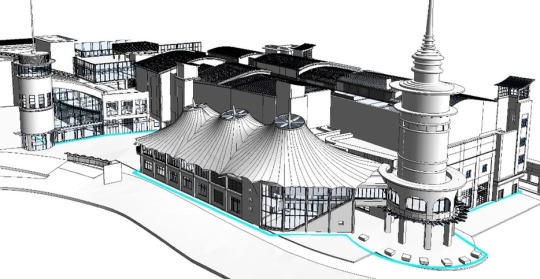
HitechDigital is a leading BIM service provider specializing in Point cloud to BIM services, developing as-built Revit models and CAD drawings. We convert 3D laser scans captured by Matterport, Faro, Leica, Trimble, Truescan, 360 photos etc. (in .rcp, .rcs, .obj, .las etc.) into architectural, structural and MEPF 3D Revit models along with 2D CAD plans.
#laser scan to bim#point cloud conversion#point cloud modeling#point cloud to bim#scan to bim#scan to revit model
0 notes
Text
Harnessing the Power of Scan to BIM Technology in the AEC Industry

Scan to BIM services has become a marvel in the AEC industry due to its list of benefits. AEC professionals now easily execute the entire remodeling project with the help of technology without any delays or cost overruns. Moreover, it also helps AEC professionals to remain on the same page, resulting in enhanced communication and collaboration.
#scan to bim#scan to bim services#point cloud to bim#laser scan to 3d model#laser scan to bim#point cloud to bim services#scan to bim modeling#point cloud to revit#scan to bim company#point cloud to revit model#point cloud to bim model#point cloud to 3d model
2 notes
·
View notes
Text
2 notes
·
View notes
Text
Convert Point Cloud Data to 3D Revit Model
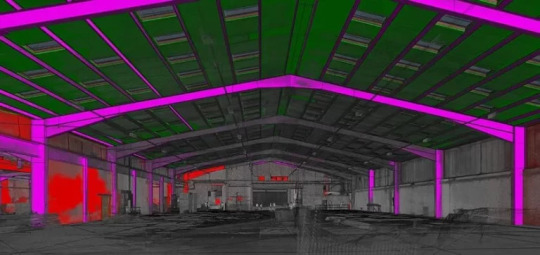
Renovation and restoration of heritage buildings add further challenges to the conversion of point clouds into Revit 3D models. These challenges include inconsistent or missing information, inaccurate interpretation of scanned data of complex geometry, and various other barriers. Point cloud to BIM modeling addresses these challenges. Detailed point clouds for 3D models with the right Revit workflows lead to time and cost savings and enhanced ROI. https://bit.ly/44WSw6y
#point cloud to 3d model#point cloud to bim#3d bim#point cloud to bim services#scan to bim revit#point cloud to bim model
3 notes
·
View notes
Text
BIM Modeling Services

S E C D Technical Services LLC stands as a beacon of innovation and excellence in Dubai, UAE, offering top-tier BIM Modeling Services that redefine the construction landscape.BIM fosters enhanced collaboration among stakeholders by providing a centralized platform for sharing information, reducing errors, and streamlining communication channels. Their BIM modeling services are a testament to this ethos, representing a fusion of cutting-edge technology, expertise, and a client-centric approach.
Choosing S E C D Technical Services LLC isn't just about selecting a BIM service provider; it's about embracing a future where technology empowers efficiency, sustainability, and collaborative excellence. We are more than modellers; we are catalysts, transforming the way Dubai, and the world, builds.
For More Details Visit our Website:
#BIM Modeling Services#Revit BIM Modeling#BIM Consultancy Services#BIM Engineering Services#scan to bim Services Dubai#BIM Engineering Modeling Services#BIM Engineering Services Dubai#BIM Consultancy Engineering Services#bim design and drafting services#BIM Consultant Engineering Services
0 notes
Text
Explore the Various Effective Strategies for Revit Clash Detection in BIM Projects.

Building Information Modeling (BIM) has revolutionized the architectural, engineering, and construction industries by enabling enhanced coordination and clash detection before physical construction begins. Revit clash detection tools and strategies play a pivotal role in identifying and resolving design conflicts, ensuring smoother project execution.
Understanding the Basics of Clash Detection
What is Clash Detection? At its essence, Revit clash detection serves as a fundamental component of the BIM coordination process. It is designed to preemptively identify points within a 3D model where building components might intersect or conflict—known as clashes. These are broadly categorized into three types:
Hard Clashes: Occur when two solid components occupy the same space.
Soft Clashes: Involve elements that intrude into each other’s geometric tolerances or required buffer zones.
Workflow Clashes: Arise from scheduling conflicts, where two processes are planned to occur simultaneously.
Each type of clash has specific implications for project management and requires distinct strategies for resolution. Understanding these types will facilitate more effective clash detection and enhance overall project workflow.
1. Model Preparation and Setup
What does it take to set the stage for successful Revit clash detection? The answer begins with the meticulous preparation and setup of 3D models. It’s essential that all stakeholders—architects, engineers, and construction managers—collaborate using a unified platform to forge a comprehensive 3D model of the proposed structure.
Key Steps:
Collaborative Modeling: Ensure that all parties are working from a unified model to prevent discrepancies.
Detailed Documentation: Include all necessary architectural, structural, and MEP details to facilitate accurate clash detection.
Regular Updates: As the project progresses, continuously update the model to reflect any changes or new insights.
This initial phase is critical because it sets the parameters within which clash detection operates, establishing a baseline for identifying and resolving potential conflicts efficiently.
2. Utilizing Navisworks for Enhanced Detection
How can Navisworks transform the process of clash detection? By importing Revit models into Navisworks, project teams can take advantage of its robust environment to manage and test the complexities of large-scale projects more effectively.
Guidelines for Using Navisworks:
Export and Import: Begin by exporting the Revit model in a format compatible with Navisworks, typically NWC or NWD, and then import it into the Navisworks environment.
Environment Setup: Configure the project’s settings, including units, levels, and viewpoints, to align with the project’s specifications.
Clash Detective Tool: Use this powerful feature to systematically identify and categorize potential clashes between different systems and components.
The strategic use of Navisworks not only enhances the detection capabilities but also provides a more granular control over the clash detection process, enabling teams to pinpoint and address issues with greater precision.
3. Setting and Adjusting Tolerance Parameters
Why is setting appropriate tolerance parameters in clash detection crucial? It ensures that the software identifies only genuine clashes, reducing the noise of false positives that can clutter the process. Proper tolerance settings are vital for focusing efforts on significant issues that could impact the project timeline or budget.
Considerations for Tolerance Settings:
Understand Project Needs: Different projects might require different levels of precision. Understand the specifics of your project to set relevant tolerances.
Set Clearance Tolerances: Define how close elements can be to each other before they are considered to clash. For instance, a tolerance of 5mm might be appropriate for detecting critical structural clashes.
Adjust Overlap Tolerances: Determine the acceptable overlap between components, which is crucial for MEP systems where slight intersections might not pose a problem.
Setting these parameters carefully ensures that the clash detection process is tailored to the specific needs of the project, enhancing both the efficiency and effectiveness of the detection efforts.
4. Running and Managing Clash Tests
What is the best way to ensure that your project’s design adheres to its specifications and anticipates potential issues? Running clash tests in Navisworks following the model setup and parameter adjustments is key. This phase is all about applying what has been prepared and seeing the results in action.
Steps to Execute Clash Tests:
Initiate New Tests: Within Navisworks, navigate to the “Clash Detective” tab and begin by setting up a new test, specifying the clash rules and test parameters like tolerance and search distance.
Selection of Models: Choose which models or elements to include in the test, ensuring that all relevant parts of the construction are checked for conflicts.
Run the Tests: Execute the clash tests, allowing Navisworks to process the information and identify where clashes occur.
Following these steps allows teams to systematically address potential issues before they become actual problems, greatly improving project efficiency and reducing unexpected challenges.
5. Clash Resolution and Reporting
How can resolving clashes effectively enhance the construction process? Once clashes are identified, the next critical step is to address and resolve these issues. This process is not only about fixing problems but also about communicating and documenting the resolutions effectively.
Effective Clash Resolution Practices:
Review and Categorize Clashes: Each identified clash should be reviewed to understand its impact on the project. Categorizing them based on severity can help prioritize which issues to address first.
Collaborative Resolution: Engage relevant stakeholders in the resolution process. For example, structural engineers and MEP specialists might need to collaborate to modify designs that conflict.
Documentation and Reporting: Update the clash reports with resolutions and circulate them among the project team. This documentation is crucial for tracking resolved issues and ensuring all team members are informed of changes.
By fostering a collaborative approach to resolving clashes and maintaining thorough documentation, projects can achieve a higher standard of precision and efficiency. This not only minimizes costly delays but also ensures that the final construction is free from preventable errors.
Best Practices for Effective Clash Detection
Here are some best practices derived from recent industry insights:
Early Integration: Incorporating clash detection at the project’s inception is crucial. This early-stage focus helps anticipate potential issues and provides ample time for resolution before they escalate, minimizing costly delays and rework.
Comprehensive Model Preparation: Ensure all models are meticulously prepared and reviewed before proceeding to the clash detection phase. This involves organizing and optimizing the models to enhance clarity and accuracy during the detection process.
Use of Advanced Tools: Employing advanced BIM tools like Navisworks or Solibri enhances the clash detection process. These tools allow for detailed setting of clash tolerances, and sophisticated algorithms help in identifying and prioritizing clashes based on their severity and impact on the project.
Regular and Systematic Testing: Conduct clash detection tests regularly as the project progresses. This iterative process helps in catching new clashes that might arise from modifications or further detailing of the project models.
Collaborative Resolution Process: Once clashes are identified, fostering an environment of collaboration is key for effective resolution. Engage all relevant stakeholders—architects, engineers, and construction managers—in the resolution process. Utilize centralized communication systems to discuss and resolve clashes promptly.
Documentation and Reporting: Keeping thorough records of all detected clashes, their resolutions, and the parties responsible is essential. This not only aids in immediate resolution but also serves as a reference to avoid similar issues in future projects.
Leveraging Technological Advances: Stay updated with the latest developments in BIM technology. Emerging tools and functionalities can offer more precise detection capabilities and streamline the clash detection process.
Conclusion on SmartCADD
At SmartCADD, we leverage state-of-the-art tools like Revit and Navisworks to ensure that our BIM modeling services are not only efficient but also cost-effective. By integrating advanced clash detection techniques early in the design phase, we help minimize rework and delays, ensuring that our projects meet the highest standards of quality and safety.
This approach not only saves time and costs but also enhances the overall safety and quality of the construction projects we handle. Through our innovative strategies and skilled use of technology, we aim to provide our clients with the best possible outcomes in all our BIM endeavors.
Source URL:
https://www.smartcadd.com/explore-the-various-effective-strategies-for-revit-clash-detection-in-bim-projects/
0 notes
Text
Quick Start: Point Cloud to Revit Modeling Guide
The "Point Cloud to Revit Modeling Quick Guide" offers a concise yet comprehensive overview of the process of converting point clouds to 3D models using Revit software. This guide provides step-by-step instructions, tips, and best practices for efficiently importing, processing, and integrating point cloud data into Revit, enabling users to create accurate and high-quality building models for architectural, engineering, and construction projects. Whether you're a beginner or an experienced user, this guide serves as a valuable resource for navigating the complexities of point cloud to Revit modeling effectively.
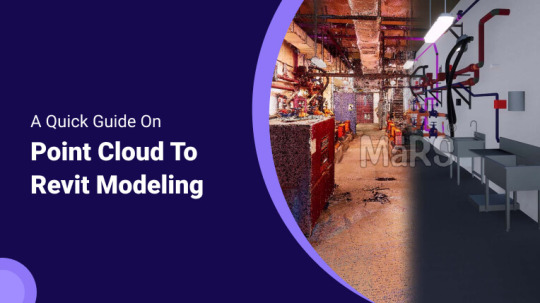
0 notes
Text
Scan to CAD and point cloud to BIM modeling services
Introduction:
In the dynamic realm of architecture, engineering, and construction (AEC), leveraging cutting-edge technologies is paramount for efficiency, accuracy, and innovation. One such transformative process gaining significant traction is Scan to CAD and Point Cloud to BIM Modeling Services. These services offer a bridge between physical reality and digital design, revolutionizing traditional workflows and opening avenues for unprecedented precision and creativity. Scan to CAD and Point Cloud to BIM modeling services have emerged as transformative tools, revolutionizing how professionals conceptualize, design, and execute projects.

Introduction to Scan to CAD and Point Cloud to BIM Modeling Services:
Scan to CAD involves the conversion of scanned data from physical objects or environments into Computer-Aided Design (CAD) files. On the other hand, Point Cloud to Building Information Modeling (BIM) entails the transformation of three-dimensional point cloud data into intelligent BIM models. These services collectively offer a comprehensive solution for modern design challenges. Scan to CAD processes capture detailed spatial information of physical structures with remarkable precision. This data is then transformed into digital CAD models, providing designers and engineers with a comprehensive virtual representation of the scanned environment.
Enhanced Accuracy and Precision:
One of the key advantages of Scan to CAD and Point Cloud to BIM Modeling Services is their ability to capture intricate details with unparalleled accuracy. By utilizing advanced scanning technologies such as LiDAR (Light Detection and Ranging) and photogrammetry, every nuance of the physical environment can be accurately captured and translated into digital models, ensuring precise representation in the design phase.
Efficiency and Time Savings:
Traditional methods of manual measurement and drafting are not only time-consuming but also prone to errors. Scan to CAD and Point Cloud to BIM services streamline the design process by significantly reducing the time required for data acquisition and model generation. This efficiency translates into faster project delivery timelines and cost savings for stakeholders.
Seamless Integration with Existing Workflows:
These services seamlessly integrate with existing design workflows, enhancing collaboration among architects, engineers, and construction professionals. The compatibility of CAD and BIM models ensures smooth communication and data exchange throughout the project lifecycle, from conceptualization to construction and beyond.
Improved Visualization and Analysis:
By converting point cloud data into intelligent BIM models, designers gain access to powerful visualization and analysis tools. This enables them to explore different design scenarios, conduct clash detection, and simulate real-world conditions with greater accuracy, leading to informed decision-making and optimized design outcomes. Facilitating Renovation and Retrofit Projects:
Scan to CAD and Point Cloud to BIM services are particularly valuable for renovation and retrofit projects where accurate as-built documentation is essential. By capturing existing conditions in detail and creating precise digital models, designers can seamlessly integrate new elements into existing structures, minimizing disruptions and maximizing efficiency.
Supporting Sustainable Design Practices:
The ability to accurately assess existing building conditions and visualize the impact of design changes contributes to sustainable design practices. By optimizing energy efficiency, material usage, and building performance, Scan to CAD and Point Cloud to BIM Modeling Services play a crucial role in creating environmentally conscious and resource-efficient structures.
Enhancing Safety and Risk Mitigation:
Accurate documentation of existing conditions through point cloud scanning reduces safety risks associated with site visits and manual measurements. Moreover, by identifying potential clashes and design inconsistencies early in the process, these services help mitigate construction errors and costly rework, enhancing overall project safety and quality.
Adapting to Evolving Industry Trends:
As the AEC industry continues to embrace digital transformation, Scan to CAD and Point Cloud to BIM Modeling Services are poised to play an increasingly integral role. From augmented reality (AR) and virtual reality (VR) applications to the integration of artificial intelligence (AI) for automated modeling tasks, the possibilities for innovation are vast and evolving.
Conclusion:
Rvtcad represents Scan to CAD, and Point Cloud to BIM Modeling Services represents a paradigm shift in the way architectural and construction projects are conceived, designed, and executed. By harnessing the power of advanced scanning technologies and intelligent modeling algorithms, these services empower designers to push the boundaries of creativity while ensuring accuracy, efficiency, and sustainability in every project they undertake. Embracing these transformative capabilities is not just a choice but a necessity for staying competitive in today's rapidly evolving AEC landscape.
#Scan to cad#point cloud to bim modeling#scan to bim#point cloud to bim#bim services#3d laser scanning#bim laser scanning#scan to revit#as-built drawing#as-built drawings#point cloud to cad
0 notes
Text
Get the Best Laser Scan to BIM Services in Bristol, UK

Silicon EC UK Limited offers comprehensive Laser Scan to BIM Services in Bristol, UK, catering to the evolving needs of the construction and architectural industries. Our experienced team of engineers and BIM specialists transforms raw scan data into intelligent 3D models, seamlessly integrating them into the BIM environment. Our team of experienced professionals utilizes state-of-the-art equipment to conduct comprehensive laser scans, generating highly detailed point clouds that serve as the foundation for creating accurate 3D models. Our services empower clients to streamline project planning, enhance construction coordination, and minimize errors, ultimately leading to improved project outcomes and cost savings. Our commitment to excellence, combined with a collaborative approach, ensures seamless communication and transparency at every stage of the BIM project.
Supports and software facility:
Our dedicated workforce comprises steadfast QC heads, proficient Team Leads, and experienced Engineers who possess extensive expertise. Our BIM Services adeptly utilize cutting-edge software, including AutoCAD, Tekla Structure, and Revit Structure, showcasing a commitment to staying at the forefront of technological advancements.
We are a BIM Engineering Company that presents BIM Engineering Services Bristol and other cities covering London, Liverpool, Manchester, York, Leeds-Bradford, Glasgow, Newcastle, Sheffield, and Sunderland.
Choose Silicon EC UK Limited for comprehensive Laser Scan to BIM Services in Bristol, UK, and experience the difference in precision, reliability, and innovation for your next Building project.
For More Details Visit our Website:
#Laser Scan to BIM Services#Revit Scan to BIM Services#3D Laser Scan to BIM Services#Point Cloud to BIM Service#Scan to BIM Conversion Services#Scan to BIM Services#BIM Services#Building Information Modeling Services#Building Information Modeling#BIM#BIM Services Bristol#BIM Engineering Services UK#BIM Services UK#Laser Scan to BIM Services Bristol#Scan to BIM Services UK#CAD Design#CAD Drafting#CAD Drawing#Engineering Services#Engineering Company#Engineering Firm
0 notes
Text
We are committed to offering our Revit Content Creation services and VDC (Virtual design construction) services leading to efficient, sustained, and growth-oriented development to help our clients.
#3d modeling services#bim outsourcing companies in india#bim outsourcing services#bim services#virtual design construction services#bim services provider#architectural design#scan to bim#scan to revit
0 notes
Text
BIM Consultants Canada:-
Building Information Modelling usually named BIM is a keen 3D BIM displaying strategy utilized in the AEC business. The subsequent three-layered model created by BIM innovation shows all the structure data much before the genuine development happens. An exhaustive device is utilized right from the planning stage to the post-development one. https://www.seekcurity.com/Bim-consultancy.html

#Scan to BIM Services in Toronto#Scan to BIM Services in Canada#Architectural Engineering Company in Toronto#MEP BIM Services in Canada#Revit Modelling Company in Toronto
0 notes
Text
How To Improve Accuracy With Laser Scanning For BIM?
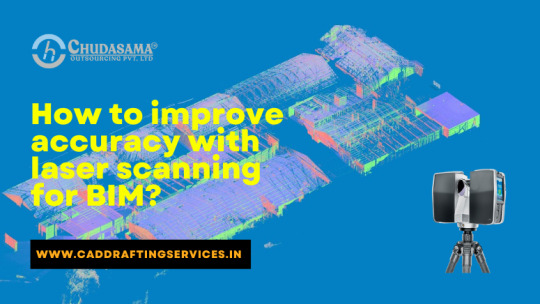
Laser scanning can be an efficient tool for creating accurate Scan to BIM Modeling. There are various factors that may impede its accuracy. The technique of scanning current circumstances and using that information to produce an exact as-built model of such circumstances is known as Point Cloud to BIM Modeling. A usual technique involves taking measurements in the area and merging them with the most recent documentation to make an as-built model. For more information, read our blog, https://caddraftingservices.in/blog/improve-accuracy-with-laser-scanning-for-bim/
#scan to bim modeling services#scan to bim modeling#scan to bim services#point cloud to bim services#laser scan to bim services#point cloud to revit services
0 notes
Text
Efficiency in Construction with Point Cloud to BIM Workflow

Scan to BIM in construction is a widely accepted technology that eases the complex process of renovation and reconstruction projects. Incorporating point clouds into BIM workflow requires certain steps. Get the details of how point clouds to BIM enhance the construction process.
#point cloud to bim#scan to bim services#point cloud to bim services#scan to bim#point cloud 3d modeling#pint cloud to revit modeling#scan to bim modeling#scan to 3d models#scan to revit modeling#3D laser scan to bim
0 notes
Photo
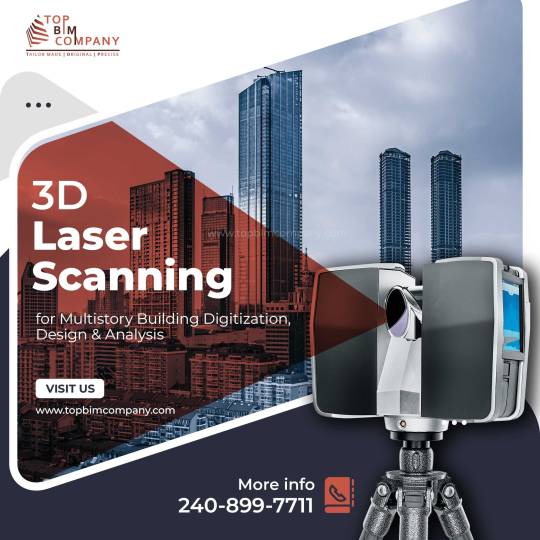
3D laser scanning is a method of collecting extremely fine and correct information about a construction area using laser rays. A laser beam assesses the structure’s numerous dimensions, including the length, width, and height of the construction elements, and also their connections to each other.
The point cloud image created by the 3D laser scanning precisely copies the scanned objects. Based on the make and type of the 3D scanner, it could be used up to a distance of many meters. The information obtained can subsequently be utilized to construct 2D CAD drawings or 3D Revit BIM models using Building Information Modeling (BIM) and Computer-Aided Drawing (CAD) tools.
#3D laser scanning#Laser Surveying#LiDAR Scanning#3d building scanning#2D CAD drawings#3D Revit BIM models
0 notes
Text
3D Revit Modeling from Point Cloud Data
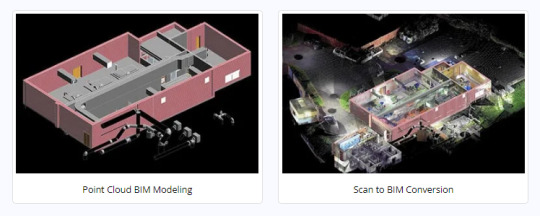
A building construction company from the UK approached Hitech BIM Services. With a need for Scan to BIM modeling of the institute’s mechanical backyard, the client provided images and files as input. Our team built a coordinated and clash-free BIM model with the relevant architectural and structural requirements. This led to informed decision-making for the client, reinforced with diminished risks and cost and time reduction.
0 notes
Text
BIM Engineering Services

S E C D Technical Services LLC stands as a beacon of innovation and excellence in Dubai, UAE, offering top-tier BIM Modeling Services that redefine the construction landscape. Our team of certified BIM professionals, architects, engineers, and AutoCAD specialists possess the expertise and passion to guide your project from concept to completion. We believe BIM is not just a technology, but a transformative force shaping the way we design, build, and manage our built environment. With our expertise, dedication, and commitment to collaboration, we are ready to help you turn your vision into a reality, brick by virtual brick.
Choosing S E C D Technical Services LLC isn't just about selecting a BIM service provider; it's about embracing a future where technology empowers efficiency, sustainability, and collaborative excellence. We are more than modellers; we are catalysts, transforming the way Dubai, and the world, builds.
For More Details Visit our Website:
#BIM Engineering Modeling Services#BIM Engineering Services Dubai#BIM Consultancy Engineering Services#BIM Design and Drafting Services#BIM Consultant Engineering Services#BIM Services#Building Information Modeling Services#BIM CAD Services#BIM Engineering Consultants#Scan to BIM Dubai#BIM Engineering Company#BIM Consultancy Services#BIM Modeling Services#Revit BIM Modeling#BIM Engineering Services#Building Information Modeling Services UAE#Building Information Modeling UAE#BIM Building Information Modeling Dubai#BIM Outsourcing Dubai
0 notes